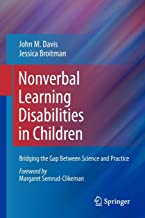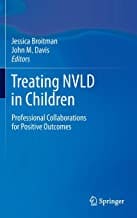JESS THE AUTHOR
BOOKS
Learning Disorders Across The Lifespan: A Mental Health Framework
This book addresses the need to view specific learning disorders (SLDs) within a mental health framework, as supported by their placement alongside autism spectrum disorder (ASD) and attention deficit hyperactivity disorder (ADHD) in the Diagnostic and Statistical Manual of Mental Disorders, Fifth Edition (DSM-5). It describes how policy and practice point to a different perspective – specifically that SLDs are often treated as educational rather than psychological problems – and examines the implications of this dichotomy.
Learning Disorders Across The Lifespan: A Mental Health Framework
This book addresses the need to view specific learning disorders (SLDs) within a mental health framework, as supported by their placement alongside autism spectrum disorder (ASD) and attention deficit hyperactivity disorder (ADHD) in the Diagnostic and Statistical Manual of Mental Disorders, Fifth Edition (DSM-5). It describes how policy and practice point to a different perspective – specifically that SLDs are often treated as educational rather than psychological problems – and examines the implications of this dichotomy.
NVLD and Developmental Visual-Spatial Disorder in Children
This volume examines how a child’s psychology – thoughts, feelings, beliefs – affects functioning and learning, and how experiences are processed through individual personality, psychology, culture, family dynamics, and environmental and economic circumstances.
NVLD and Developmental Visual-Spatial Disorder in Children
This volume examines how a child’s psychology – thoughts, feelings, beliefs – affects functioning and learning, and how experiences are processed through individual personality, psychology, culture, family dynamics, and environmental and economic circumstances.
Nonverbal Learning Disabilities in Children: Bridging the Gap Between Science and Practice
Examines NVLD within the context of other developmental disorders, most notably high-functioning autism and Asperger’s syndrome, exploring current genetic, environmental, and neurobiological theories of NVLD causes, diagnostic methods, and quality interventions.
Nonverbal Learning Disabilities in Children: Bridging the Gap Between Science and Practice
Examines NVLD within the context of other developmental disorders, most notably high-functioning autism and Asperger’s syndrome, exploring current genetic, environmental, and neurobiological theories of NVLD causes, diagnostic methods, and quality interventions.
Treating NVLD in Children: Professional Collaborations for Positive Outcomes
A concise guide for professionals treating young people with nonverbal learning disabilities. Expert psychologists, educators, and rehabilitative therapists explain their treatment approach, decision-making process, and professional interactions.
Treating NVLD in Children: Professional Collaborations for Positive Outcomes
A concise guide for professionals treating young people with nonverbal learning disabilities. Expert psychologists, educators, and rehabilitative therapists explain their treatment approach, decision-making process, and professional interactions.
Understanding Non-Verbal Learning Disability: A Guide to Symptoms, Management and Treatment (Understanding Atypical Development)
This essential book offers an accessible, evidence-based guide to Non-Verbal Learning Disability (NVLD) informed by the most current research, and clinical and educational practice. It provides a thorough explanation of the science behind the condition, alongside ideas, support, and practical tips for managing the everyday challenges of the disorder at school and in family life.
Understanding Non-Verbal Learning Disability: A Guide to Symptoms, Management and Treatment (Understanding Atypical Development)
This essential book offers an accessible, evidence-based guide to Non-Verbal Learning Disability (NVLD) informed by the most current research, and clinical and educational practice. It provides a thorough explanation of the science behind the condition, alongside ideas, support, and practical tips for managing the everyday challenges of the disorder at school and in family life.
Psychology Today Blogs
I treat adults in psychotherapy. Several of them have children diagnosed (finally) with NLD. Getting help was a nightmare for them for many years. Then I hooked them up with Drs. Davis and Broitman who finally brought calm, thoughtful sense into their lives and their relationship to their kids. Understanding this subtle, complex syndrome is half the battle. Doing something about it is another.
It has been both my direct experience with Davis and Broitman and the knowledge gained from this book that’s made it crystal clear how under-diagnosed, under-treated, and misunderstood these kids tend to be. Their book finally corrects this problem.
NLD really HAS to be treated by a team, that it’s a collaborative enterprise involving people with different skill-sets. Putting them together is the problem. This book is the solution.
As a family therapist, I very much took heart from their conclusion that “children with NVLD can successfully learn and lead productive lives despite their particularly unusual set of strengths and difficulties.” With the help of this book, their families, and well-educated practitioners, I am sure they can.
Davis and Broitman have made a significant contribution with the publication of Nonverbal Learning Disabilities in Children. As a psychologist, I can enthusiastically recommend it to colleagues and clients.
For many of us, the term nonverbal learning disability has not been clearly defined or understood. This book is accessible. It clearly defines nonverbal learning disabilities and the problems encountered by those who struggle with them.
Whether working with children or adults, this book should be part of a mental health practitioner’s library.





